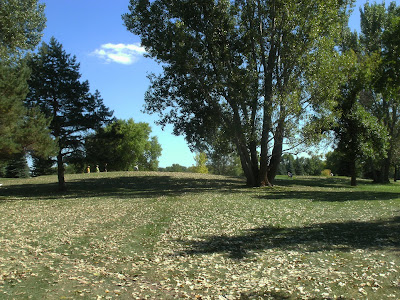Probably one of the biggest questions in the turf industry these days, if you ask any superintendent, is what color they like their turf equipment. Toro and John Deere are the two big players in the market, and everyone has their preference. Both manufacturers make a quality piece of equipment. Our fleet at this point is almost entirely Toro, with a small splattering of orange (Jacobsen) thrown in just to make things interesting. While I have nothing against either one of these manufacturers, the fact of the matter is that some of our equipment is 10-15 years old and is just plain tired.
We do not have a full-time mechanic on staff, and with nearly half a million dollars of equipment parked in our equipment bay, it needs to be taken care of by someone. Between Andy and myself we had an extremely busy winter getting everything in tip top shape for this summer. However, with some of our equipment that is just too old, we still end up putting the proverbial duct tape and zip ties all over them during the course of the growing season just to keep them going. There are a few mowers in our shop that spend almost as much time either getting worked on or sitting around broken as they do actually working out on the course. We are short staffed as it is in the summer months, and when Andy or I have to spend time in the shop working on equipment, it just means there is one more thing we are neglecting out on the course.
Our oldest mowers, two Toro 325 rough mowers, were built in 2000 and have close to 4,800 operating hours on them. To put that into perspective, imagine in your car averaged a speed of 50 mph over its lifetime of stop and go traffic and interstate cruising. If you drove it for 4,800 operating hours your car would have 240,000 mile on it! Needless to say, at some point it doesn't make sense to keep fixing it, its just time for a new car.
Last week, our friendly John Deere dealer out of SD brought us up a new 7500 fairway mower to demo for a couple days. Our current fairway mowers are 2007's and have a little over 2,000 hours on them, and while they are still running strong, they are entering the point in their lifespan where major repairs are right around the corner. For example, after one more winter of grinding and sharpening the reels and bedknives, they will literally be out of any steel left to cut with. Replacement of reels, bedknives, and bearings for the 10 cutting units on our two fairway mowers is going to cost a quick $5,000 next winter, just to keep them cutting grass. And those are only the forseeable costs....
Seeing the side by side cutting comparison of our 6 year old fairway mowers to a new unit was an amazing thing to see. Our old fairway mowers have hydraulically driven reel motors. Some of you may have seen the consequences, especially last year, when a 6 year old hydraulic hose just decides to crack and break one day: lots of dead grass. These new fairway mowers have reels driven by electric motors, meaning no hydraulic oil, meaning no potential for leaks. Furthermore, these electric driven reels run faster and quieter. The new John Deere fairway mower cut faster, more precise, quieter, and when all was said and done used about 25% less fuel.
 |
| Side by side comparison in 17 fairway. |
 |
| Green just looks better on a golf course.... |















